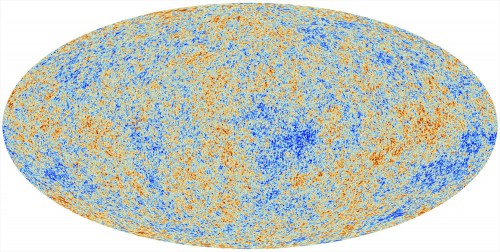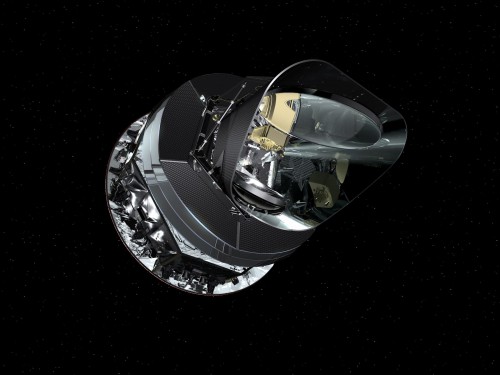
Recent findings from the European Space Agency’s Planck spacecraft have provided some minor revisions to the currently accepted parameters of the universe. As well as it now being 13.8 billion years old, the distribution of our universal knowns and known-unknowns now stand as: conventional matter (5 percent), dark matter (27 percent), and dark energy (68 percent).
The nature of dark energy remains utterly unknown. If it really is energy, it is a kind of energy that is so alien to our current understanding of energy, that it’s hardly worth using the word. It’s just dark something.
However, dark matter is less troublesome. It does behave in much the same way as matter that we are familiar with. Sure, it’s invisible and it’s weakly interacting—but then so are neutrinos, billions of which are passing through your body every second. You don’t notice them because they are invisible and weakly-interacting.
A key feature of dark matter is that it gravitates. Although neutrinos have mass, they fly around the universe at close to the speed of light, seemingly wanting nothing to do with each other. However, dark matter particles readily accumulate into big stable clumps, hence providing a gravitational foundation upon which conventional matter can also accumulate into large-scale structures like galaxies and galactic clusters.
So, since a key feature of dark matter is gravitation, shouldn’t it have all collapsed down into black holes long ago and gobbled up the rest of the universe’s matter in the process? Fortunately, the answer is no.

Getting something to fall into a black hole is not as straight-forward as it might seem. While an exact straight-line trajectory might score a hole-in-one, it is more common that a chunk of matter is drawn into orbit around a black hole. Potentially, such a chunk of matter could then stay in that orbit indefinitely, unless something causes its orbit to decay.
What we see with conventional matter is that orbiting material accumulates into an accretion disk which begins to radiate energy as various interactions and collisions within the disk heat the material within. That electromagnetic radiation is an example of the conservation of energy. Essentially, the interactions and collisions within the accretion disk convert the momentum energy of the orbiting matter into radiation. And as a chunk of matter in orbit loses its momentum energy, its orbit will begin to decay.
Orbital decay within an accretion disk means that orbiting matter is forced to occupy an increasingly narrower-diameter orbit, which causes more interactions and more heating until the densest parts of an accretion disk will begin emitting x-rays. But soon after that, further orbital decay shifts matter too close to the black hole’s event horizon, so that any further radiation from it is steadily red-shifted into oblivion.
But with dark matter, the above scenario never happens.
They say it takes a light year of lead to stop a neutrino in its tracks. Presumably a similar principle applies to weakly-interacting dark matter particles. A dark matter particle could be captured in orbit around a black hole, but it will scarcely interact with other matter nor can it radiate away any of its momentum energy.
As a consequence, dark matter orbits will not decay and dark matter will not spiral in to be consumed by a black hole.
Observational data seems to confirm this view. There is a strong correlation between the rate of consumption of conventional, visible matter from accretion disks and the consequent estimated mass of feeding black holes. So, unlike the rest of the universe, where dark matter seems to dominate conventional matter by a factor of five, black holes seem to be primarily built from the consumption of conventional matter.
One troublesome issue is that, since dark matter is so prevalent in the Universe, you would think that quite a lot of it should be getting caught in orbit around black holes, even if it is just a loose orbit that never decays. Perhaps, under these conditions, dark matter particles begin to interact with each other and self-annihilate, producing a characteristic positron energy signature that the Alpha Magnetic Spectrometer 2, aboard the International Space Station, may have recently detected (see this AmericaSpace article).
Want to keep up-to-date with all things space? Be sure to “Like” AmericaSpace on Facebook and follow us on Twitter:@AmericaSpace




Under normal physics, something falling towards a massive object in space does not go into orbit around it, but describes a parabolic path in and – forever – out again.
I cannot reconcile this with your article.
Hi Noel,
Yes, quite correct. Many objects that ‘fall towards’ a massive object are not necessarily caught in orbit around it. My intention was to describe the steps followed by objects that are ultimately consumed by a black hole and then to indicate that dark matter would, by and large, not be able to follow those steps, due to its physical nature.
Best wishes,
Steve